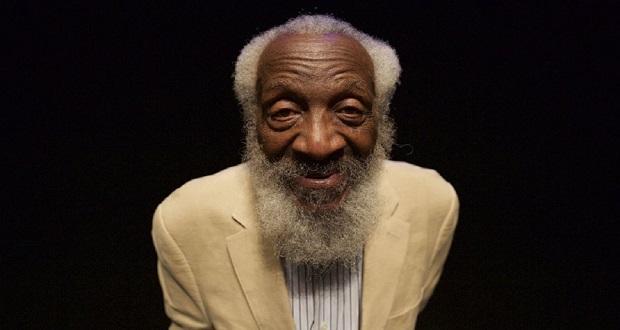
Recently, I attended a D&I-focused panel and, from the audience, squirmed uncomfortably. The panel featured a white male CEO, a “Trend Hunter” who is an Asian woman, and an Indigenous climate activist. The activist spoke about the work he began as a child in organizing demonstrations and working on the front lines of climate activism to inspire youth to reverse the harm we have collectively wrought on the environment. Then, the CEO stood up and gave a presentation about the importance of organizations being flexible to facilitate financial success, and the Trend Hunter instructed the audience about how best to connect with, and market to, people of different “micro–generations.” The tone and approach of the latter two presentations could not have been more different from the first. It was extremely awkward.
As I sat in the audience of largely corporate professionals, I felt ashamed. What, I thought, must this Indigenous activist—from whose ancestors land was forcibly and violently taken to benefit me and my ancestors—feel as he sits here and listens to people from communities that enjoy so many privileges at the expense of his own, preaching to one another about capitalist successes that continue to marginalize him and harm the environment? There are moments when I feel that D&I is failing as a field and a profession, and this was decidedly one of them.
Last week, my colleague Thamara Subramanian listed several of the challenges inherent to working for D&I in the context of a capitalist system. One such challenge she identified is the so-called “business case” for diversity. In short, the business case comes down to the claim that having a diverse team on board will make your organization yield higher profits.
The business case made a splash in the corporate D&I world going back at least to 1990, when the Harvard Business Review suggested that diversity could make organizations more competitive. Since then, a flurry of research has been published by academics and management consulting firms indicating that diversity can lead to greater innovation, better collaboration, increased responsiveness to customer needs, and infiltrating new markets. Underlying all of these claims is, first and foremost, the unspoken notion that the bottom line is the essential metric, and secondarily, a quieter “Isn’t it convenient?” that this strategy happens to align with a cultural shift toward recognizing the importance of diversity.
Clients regularly ask us to prioritize the business case in our sessions. After all, it’s essential to establish buy-in from leaders and associates alike for D&I initiatives, and, in theory, everyone can see the value of their organization’s success. Yet, even that term—buy-in—deserves some reflection; it is a metaphor deeply couched in capitalistic values… and we are talking about people, about making them feel they belong. The problem with the business case when it comes to decolonizing D&I is threefold:
- It prioritizes profits over people.
- It tokenizes employees who are perceived as bringing “diversity” to the organization, and who hold historically marginalized identities.
- When diversity is pursued for economic gain, the “diverse hires” who make it through the door are left to contend with bias, microaggressions, and wage and promotion gaps that exacerbate existing inequities and take a toll on mental and physical health. This is particularly true when diversity is emphasized over inclusion, or inclusion is only attempted superficially.
That is, while the “business case” may be an effective way for the largely white-dominated fields of D&I and HR professionals to connect to largely white corporate audiences, centering the economics of diversity and inclusion over justice inherently monetizes, and risks further marginalizing, indigenous peoples and people of color. This is what we mean when we say D&I has been “colonized.” As an industry, we are making a case for corporate success as the endgame, with equity and justice as a byproduct rather than the goal.
Centering the economics of diversity and inclusion over justice inherently monetizes, and risks further marginalizing, indigenous peoples and people of color. Share on XTo make matters worse, research on the Business Case for D&I has often been poorly conducted or incorrectly summarized, fostering a great deal of misunderstanding about this topic. Specifically, a closer look at the research demonstrates that superficially introducing diversity to formerly homogenous environments, as many organizations are currently doing, actually increases conflict and lowers cohesiveness. Ultimately, this is unsurprising, considering the polarization that characterizes our sociopolitical climate; it seems too good to be true that such tensions should magically dissolve within the four walls of our organizations—and unfortunately, it likely is.
We do a disservice to everyone when we spread unsubstantiated and unqualified claims about the promise of diversity—even if our intent is good in wanting to believe them ourselves. If people believe they just need to hire diverse employees and success will follow, we are undermining our own work. It’s time for us to do some self-reflection as D&I professionals about whose interests we are truly committed to serving, and to what extent we are willing to compromise those goals to please clients. We should be posing the question more regularly: “Why isn’t investing in diversity and inclusion for people because it’s the right thing to do enough?”
It's time for us to do some self-reflection as D&I professionals about whose interests we are truly committed to serving. Why isn't investing in diversity and inclusion for *people* because it's the *right thing to do* enough? Share on XAttempting to bridge this chasm between social justice efforts and D&I is no small task, and, truthfully, I hesitate to stop short of emphasizing that the question above (why isn’t people’s belonging and well-being reason enough?) should be the only approach we need to take. Yet, for those who remain unconvinced, allow me to introduce the new business case, which I firmly maintain spells the direction of our future: Forget being competitive; chances are good your organization will not survive at all long term if it fails to meaningfully prioritize equity and inclusion.
Forget being competitive; chances are good your organization will not survive at all long term if it fails to meaningfully prioritize equity and inclusion. Share on XA cultural shift, fueled by the ongoing historical march toward greater justice and attention to inequities and with flames fanned by the power and influence of social media, is well underway. As we have seen with recent incidents from corporations as large as Amazon, Barnes & Noble, and Wayfair, to as localized as Founders Brewing Co. (a brewery headquartered in my hometown), one “D&I Mistake” is all it takes to make the news, see your errors amplified exponentially, and face immediate backlash and boycotts. Increasingly, employees and consumers alike are demanding that organizational leaders take principled stands on social issues; organizations neglecting to stay ahead of this trend will encounter increased scrutiny and rejection—and ultimately fail. By contrast, those who anticipate these changes, have qualified teams in place to catch poor decisions before they are okayed, and aren’t afraid to take a stand for what is right will increasingly be rewarded with trust and commitment from employees and consumers alike.
Increasingly, employees and consumers alike are demanding that organizational leaders take principled stands on social issues; organizations neglecting to stay ahead of this trend will encounter increased scrutiny and rejection—and… Share on XIf you needed those last two paragraphs to “buy in” to the argument that seeking out diverse representation at all levels of your organization is “worth it,” I invite you to consider why. I invite you to reflect upon the opportunities you have been given, and why you feel that others who have been denied those same opportunities due to identities they hold do not deserve the same. I invite you to take a “people first” approach, and to do so actively, starting these difficult conversations in your organization in the name of not just organizational sustainability, but first and foremost, in the name what is right, and in service of justice and equity.



















